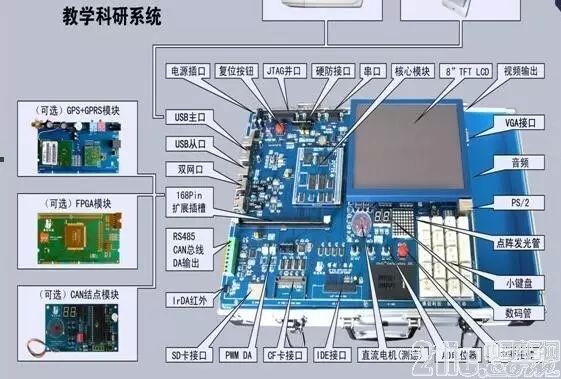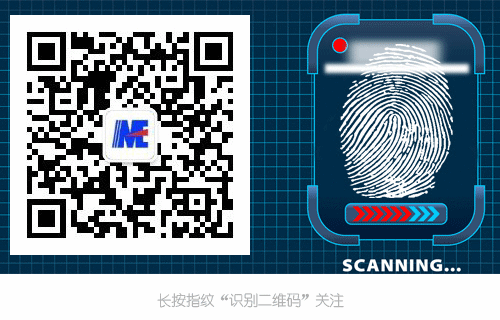
With the development of computing technology, we have moved from the PC era into the network era, and then into the post-PC era. IBM coined a term in 1999 – “Pervasive Computing”. Pervasive computing refers to the ability to access necessary information through a device whenever and wherever needed. From the perspective of computing technology, humanity has gradually extended from network computing to pervasive computing.
In simple terms, the meaning of pervasive computing is very broad, involving technologies such as mobile communication, manufacturing of small computing devices, operating systems on small computing devices, and software technology. Pervasive computing represents a way of computing that is ubiquitous and can be performed anytime and anywhere; it mainly targets mobile devices, such as information appliances or certain embedded devices, like handheld computers, pagers, in-vehicle intelligent devices, laptops, watches, smart cards, smartphones (which have some functions of handheld computers), set-top boxes, POS machines, and screen phones (which can browse the internet besides regular phone functions) among the new generation of smart devices. Pervasive computing devices can be continuously or intermittently connected to the network. They connect with the Internet, Intranet, and Extranet, enabling users to obtain various relevant information and respond anytime and anywhere. Due to the high mobility of pervasive computing devices, they are also referred to as mobile computing. Pervasive computing provides the ability to access backend data, applications, and services through various pervasive computing devices via the network. Regardless of which pervasive computing device is used, users can easily access information and receive services. Pervasive computing reduces the complexity of device usage, helping to improve the efficiency of mobile workers and the quality of daily life.

From the perspective of software systems, pervasive computing refers to using small computing devices, while constantly moving in a wide geographic area, to achieve online transaction processing and access to core enterprise data under unstable communication conditions. These small computing devices have various communication means, such as mobile communication networks and satellites, and can connect to the Internet or internal networks of enterprises, but this connection is not fixed; it is intermittent. The software technology of pervasive computing allows users to perform complex online transaction processing and information access using these devices, as the devices used by users are small and have limited computing resources (memory, storage, and CPU), with most processing tasks completed by the data servers and application servers in the computing center.
The rapid popularization of the Internet and its expansion into the home field has made the integration trend of consumer electronics, computers, and communications (3C) increasingly evident; the advent of the information age has led to increasing market and manufacturer attention on embedded systems, and embedded devices are becoming more widespread, which also promotes the development of pervasive computing.
01
Embedded Systems
Embedded systems are specialized computing systems that are technology-centric, user-oriented, product-oriented, and application-oriented, with hardware and software that can be customized, suitable for strict requirements regarding functionality, reliability, cost, size, and power consumption. Unlike general-purpose computers, embedded systems are dedicated systems designed for specific applications, aiming to make everything simpler, more convenient, more universal, and more applicable; their hardware and software must be designed efficiently, tailored to fit, eliminating redundancy, and striving to achieve higher performance on the same silicon area.
Embedded systems mainly consist of four parts: embedded processors, peripheral hardware devices, embedded operating systems, and specific application programs, forming a self-sufficient “device” that integrates hardware and software; used to realize control, monitoring, or management functions for other devices.
Characteristics that embedded systems should possess include: high reliability; the system must continue to function normally even under harsh conditions or sudden power failures; many embedded applications require real-time processing capabilities, which necessitates that the embedded operating system (EOS) has real-time processing capabilities; the software code in embedded systems demands high quality and reliability, typically stored in read-only memory or flash memory, meaning the software is required to be solid-state stored, rather than stored on disk or other media.
02
The Relationship Between Pervasive Computing and Wireless Interconnection and Network Computing
When IBM proposed the concept of “pervasive computing”, it was to describe an era where personal computers were no longer at the core of innovation, intentionally not referring to it as the wireless era. This is because IBM observed that the functions of computing, communication, storage, and processing were shifting from traditional computers to various devices. Today, we still only associate pervasive computing with mobile phones and PDAs, but computing is emerging in different forms and experiences – it is continually being integrated into pumps, meters, appliances, and clothing. For companies like IBM, “pervasive computing” is significant because its impact on infrastructure and front-end devices is equally important. For business operations, “pervasive computing” will change the way enterprises interact with their customers, suppliers, and employees. By engaging with customers and enabling mobile office work, businesses can gain more returns from their e-commerce investments. More importantly, for humans surrounded by information, pervasive computing can reduce the complexity of device usage, making our lives easier and more efficient.
In fact, pervasive computing is a natural extension of network computing, allowing not only PCs but also other small smart devices to connect to networks, facilitating instant access to information and enabling action. Once this computing model is widely adopted, people can consistently use their preferred devices (mainly embedded system devices) to access information anytime and anywhere. The term “consistent way” emphasizes the consistency of key information and key data, while its manifestation can be diverse, varying with user preferences, devices, and other factors.
3
Comparison of Pervasive Computing and Traditional Computing Models
Pervasive computing differs significantly from traditional computing models, leading to new requirements for the infrastructure that provides services. Traditional computing models are two-layer structures: designing a specific system for a specific device to suit the access and display of that particular device. During design, it must be tailored to the network protocols and display capabilities of that specific device.
The pervasive computing model faces significant challenges in connecting multiple application services to various smart devices, which means that adding a new device requires rewriting those application services, and adding a new service requires rewriting the applications on those devices. This limitation is determined by the hierarchical structure of existing systems. However, it is difficult to foresee what new and user-friendly smart devices will emerge in the future; some devices can communicate bidirectionally, while others can only passively receive information unidirectionally. Existing systems are very complex when expanding support for new devices and new application services. For example, today we can access stock information using SMS (short message service) and WAP phones, but we cannot predict what the popular devices of tomorrow will be, and everyone’s preferences for devices are also expected to be personalized; future information devices will be a competitive landscape with many players.

From a software system perspective, pervasive computing refers to the use of small computing devices, in a constantly moving process or across a wide geographic area, to achieve online transaction processing and access to core enterprise data under unstable communication conditions. These small computing devices have various communication means, such as mobile communication networks and satellites, and can connect to the Internet or internal networks of enterprises, but this connection is not fixed; it is intermittent.
Embedded computing not only requires fast and consistent computing over the network but also demands that the system orderly executes its code and stores data within a “shared” and “narrow” space.
1 Robustness Principle
Embedded computing requires not only rapid and effective computing but also that the system continues to operate normally even when certain computing units encounter errors.
2 Real-time Principle
The computation results of embedded systems depend not only on the correctness of the system’s logical operations but also on the computation time of those results.
3 Redundancy Principle
Once an embedded system has sufficient redundancy, the system’s “initial sensitivity” to its “final computation results” becomes negligible.
4 Structural Principle
For embedded systems, the trend of structural complexity indicates:
a The simpler the system structure, the more effective it is (The simplest is the best);
b The more complex the system structure, the more stable it is (More complex is more stable).
5 Simplicity Principle
When simplifying an embedded system, the interactions between the remaining functionalities will become stronger;
As system functions are simplified, the probability of success for external intruders will increase.
6 Conservativeness Principle
If a certain function is to be retained in an embedded system, it is best to consider all other functions as “sacrosanct”; the removal (extinction) or generation (invasion) of system functions will cause significant changes in the overall (cluster) structure and its dynamic performance.
From the perspective of software systems, pervasive computing refers to the use of small computing devices, in a constantly moving process or across a wide geographic area, to achieve online transaction processing and access to core enterprise data under unstable communication conditions. These small computing devices have various communication means, such as mobile communication networks and satellites, and can connect to the Internet or internal networks of enterprises, but this connection is not fixed; it is intermittent.
7 Organizational Principle
The embedded Internet’s most important aspect is often not the characteristics of individual devices in the network, but the overall order present in the network, that is, network order.
In a highly redundant network, the singular role of devices no longer constitutes the main factor affecting the overall performance of the system; rather, it is the connections and characteristics of all nodes that play a major role.
8 Network Principle
A network composed of a group of devices interacting as embedded Internet nodes exhibits properties that often have little relation to the properties of individual nodes.
9 Messaging Principle
Guaranteeing message retrieval: it has strict time sensitivity or basic operational requirements for system operations, requiring a time guarantee from the system. Once activities or tasks triggered by such messages are executed, their time constraints must be guaranteed by the system within a specified time interval.
Optimal effect messages: they have typical soft time constraints, meaning their time constraints are determined by the time sequences of activities or tasks themselves, and do not require system guarantees to meet their time constraints.
10 Immunity Principle
The embedded Internet’s immune system should be a mechanism resembling a living organism; the immune function is a “feed-forward” system, so the system should possess foresight, enabling it to “attack (large) poison with (small) poison”.
11 Fusion Principle
The embedded Internet is a complex network, allowing the complex network structure to be analyzed through simple “components”, enabling the system to interpret the “whole” from isolated “components”, or express the “global” through “nodes”.
12 Cost-performance Principle
If system A is embedded in system B, i.e., B(a), then the cost of system A should not exceed 10% of the cost of system B, while the cost of system B(a) should be greater than the sum of the costs of systems A and B, and the cost-performance ratio of system B(a) should increase by 30%.

1.What technological areas will heterogeneous integration of MCUs accelerate?
2.Where is the next disruptive opportunity that will surpass WeChat and Alibaba? Currently, only the Internet of Things seems to be the answer.
3.Illustration of the relationship between embedded Linux applications, kernels, drivers, and hardware
4.If you don’t pay attention to “Real-time IoT (RT-IoT)”, you will be left behind!
5.Summary of experiences: How to prevent FPGA-based projects from going astray?
6.Insights from a seasoned electronic engineer

Disclaimer: This article is a network reprint, copyright belongs to the original author. If there are any copyright issues, please contact us, and we will confirm copyright based on the copyright certificate you provide and pay the manuscript fee or delete the content.